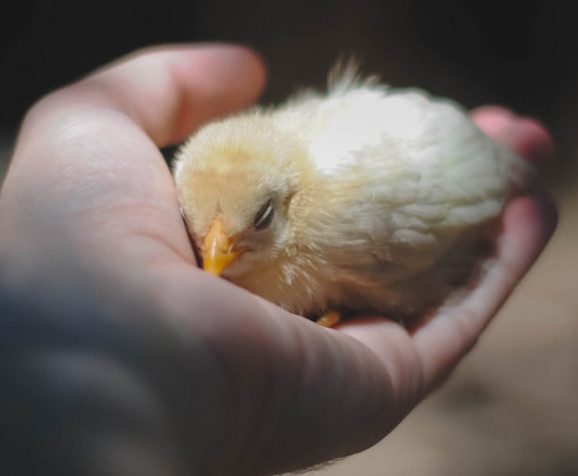Hello, fellow chicken wranglers. It’s Dave here from Chickenmethod.com!
When it comes to the wonders of poultry raising, few experiences are as rewarding as incubating chicken eggs. From selecting the perfect egg to witnessing the first cracks of a hatching chick, the process is filled with anticipation and excitement. In today’s guide, I’ll walk you through incubating chicken eggs step by step, ensuring a successful hatch!
Before You Begin: Selecting Your Eggs
Before diving into the world of incubation, you must pick the right candidates. Not all eggs are created equal!
Sources of Eggs
- Farm-fresh eggs are a good bet. Unlike their hatchery-bought counterparts, you get a chance to meet the chickeneer that raised the chickens and you may get to meet the actual parents of your potential chicks. On the other hand, trusted hatcheries can be invaluable sources.
Whichever source you decide upon, be sure to ask lots of questions about specific breed traits because not all breeds work well in all situations.
Factors to Consider
- Size: Opt for medium-sized eggs. Too large or too small can lead to hatching complications.
- Cleanliness: A bit of dirt is natural, but excessively dirty eggs can harbor bacteria. Resist the urge to scrub, as this can remove the egg’s protective bloom.
- Shape and Integrity: Oval is ideal. Avoid eggs with visible cracks or unusual shapes.
Setting Up Your Incubator
Your incubator is your egg’s first taste of life. Keep it clean. It must be as free of harmful contaminants as possible. The bloom on your natural egg safeguards your chick to a degree, but bacteria want to thrive, so you must not give them the opportunity.
Types of Incubators
Whether you choose manual, semi-automatic, or fully automatic depends on how hands-on you wish to be. Each comes with its pros and cons.
As you might have guessed already, manual incubators are less expensive than fully automatic models and require more of a hands-on approach. Here are two sources of incubators for you to browse through:
Ideal Conditions Inside the Incubator
- Temperature: Aim for a steady 99.5°F (37.5°C) if you’re using a forced-air incubator.
- Humidity: Start with a humidity of around 50% for the first 18 days. Boost it to 60-70% during the home stretch to hatch.
- Ventilation: Good airflow ensures appropriate temperature and humidity for the developing embryo.
The Incubation Process
With your incubator set, let’s start the incubation journey!
Placing the Eggs
- Ensure the pointy end is facing downward, allowing the air sac to sit at the wider end. Avoid overcrowding; each egg needs its personal space. This is not an issue in incubators with compartments for each egg.
Turning the Eggs
- Turning is crucial for even development. If you’re turning manually, aim for a minimum of three times daily. Automatic incubators take care of this for you, ensuring consistent movement. Lack of turning can result in an embryo sticking to the side of a shell.
Monitoring and Adjusting Conditions
- If you are using a manual incubator, use a reliable thermometer and hygrometer to track temperature and humidity. Consistency is key, so keep a log. If you notice irregularities, adjust the incubator settings accordingly.
- Before using an automatic model, be sure to understand all of the presets and setup instructions in general.
Candling: Peeking Inside the Egg
Candling offers a sneak peek into the developing egg. It’s fascinating and educational!
Why Candling?
- Candling helps check an embryo’s development and identify eggs that might not be viable.
- You will be able to see if an embryo has stopped developing.
- It may make hairline cracks in an egg more noticeable.
How to Candle an Egg
Using a bright LED flashlight or a specialized candling light, darken the room and shine the light on the egg’s wider end. Around days 7 and 14, you should see clear signs of development or recognize potential issues.
The Big Day: Hatching
It’s what you’ve been waiting for — hatching day!
Signs of an Imminent Hatch
Watch for subtle movements, indicating the chick is positioning for its debut. The first crack, known as “pipping,” signals the start of the hatch.
Assisting the Hatch (or not)
While tempting, it’s best to let nature unfold. Only intervene if the chick seems truly stuck, and always be very gentle.
Post-Hatching Care
Your little chicks have made their entrance. Now what?
Moving Chicks to the Brooder
- Let the chicks dry in the incubator. Once fluffy and active, transfer them to a warm brooder.
- Remove broken shells from the incubator.
First 48 Hours
Provide access to starter feed and clean water. Watch for healthy behaviors like active exploration and steady eating. Be sure to keep your new family members warm. The first few days are when you are most likely to lose baby chicks to freezing, crushing, or predation by your other domestic pets.
Incubating chicken eggs is a blend of science, patience, and a dash of magic. As you embark on this journey, cherish each moment and embrace the learning experience. With proper care and attention, you’ll soon be greeted by the delightful chirps of your newly hatched chicks!
If you have anything you would like to add to this, please feel free to leave your thoughts in the comments below. Thanks a lot and enjoy your chickens.
Dave
Chickenmethod.com

